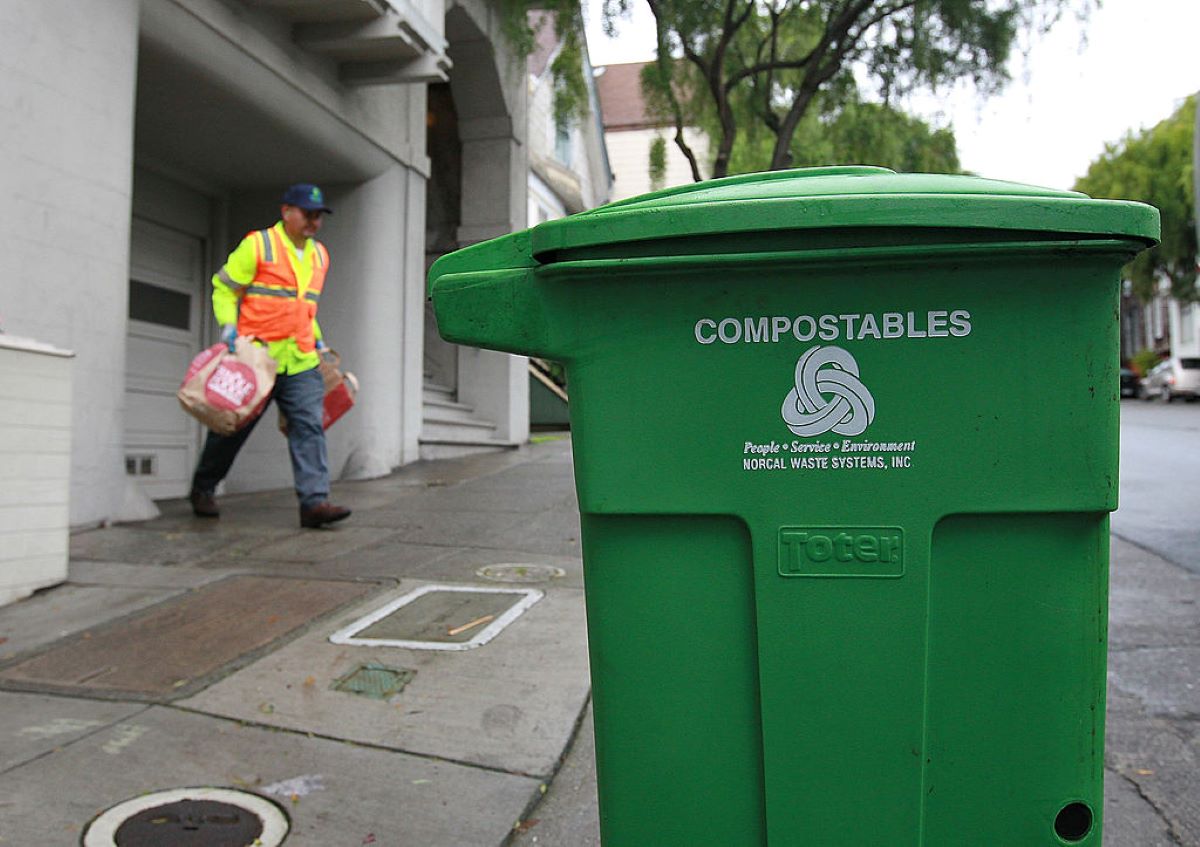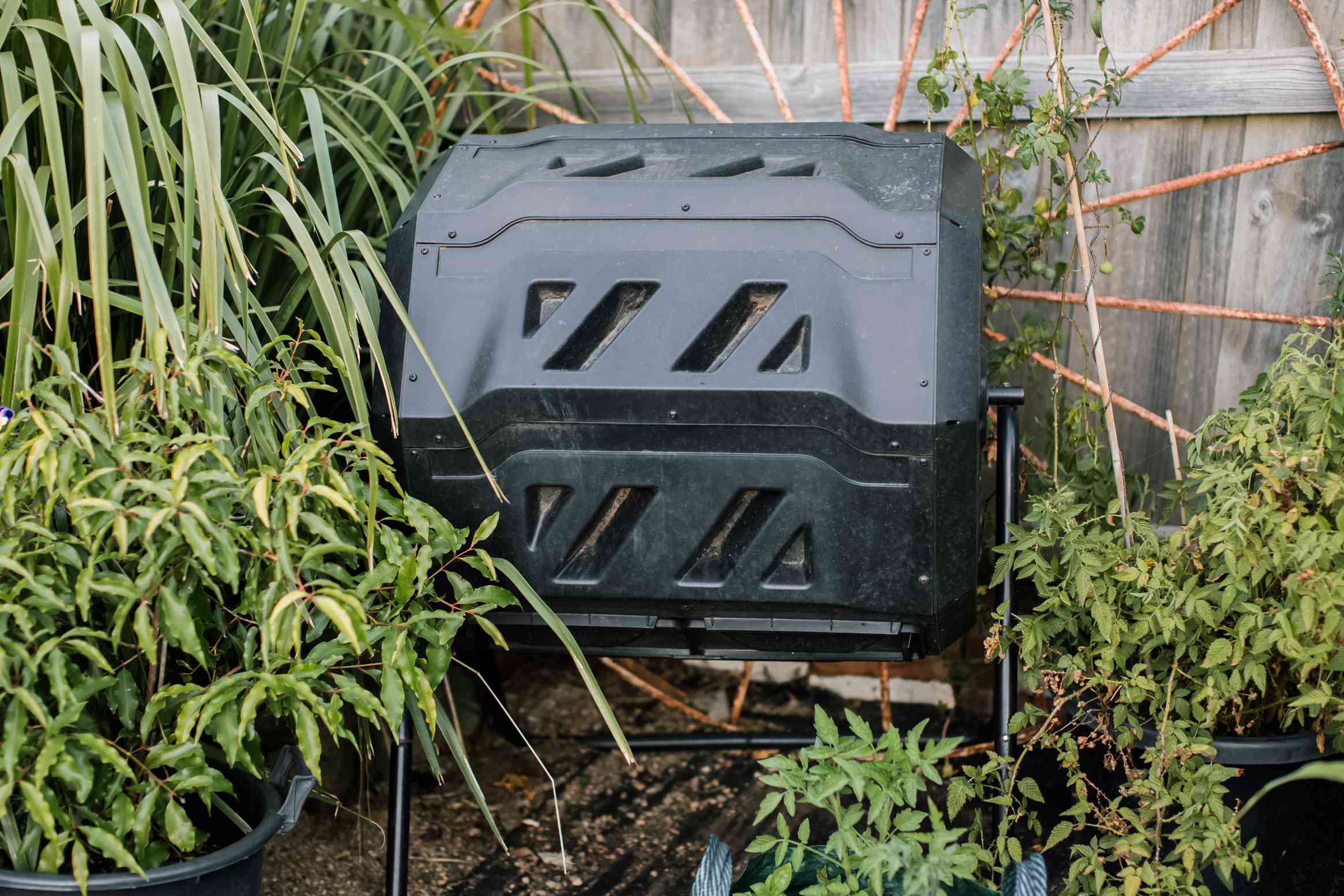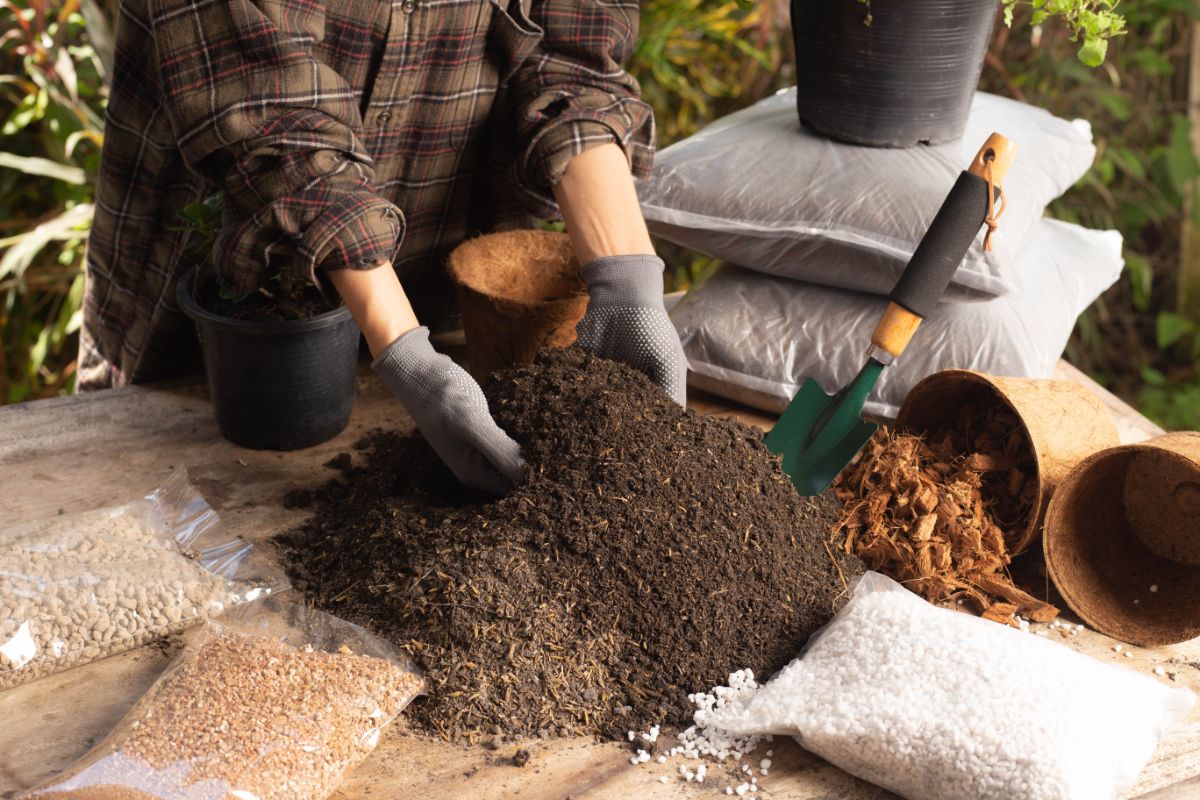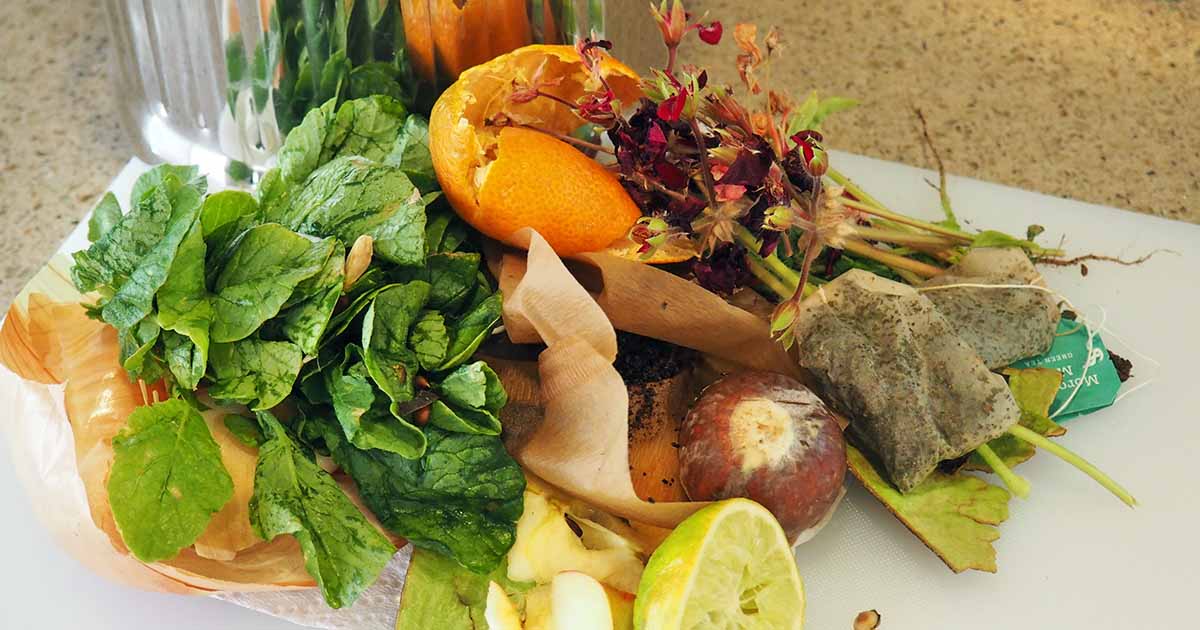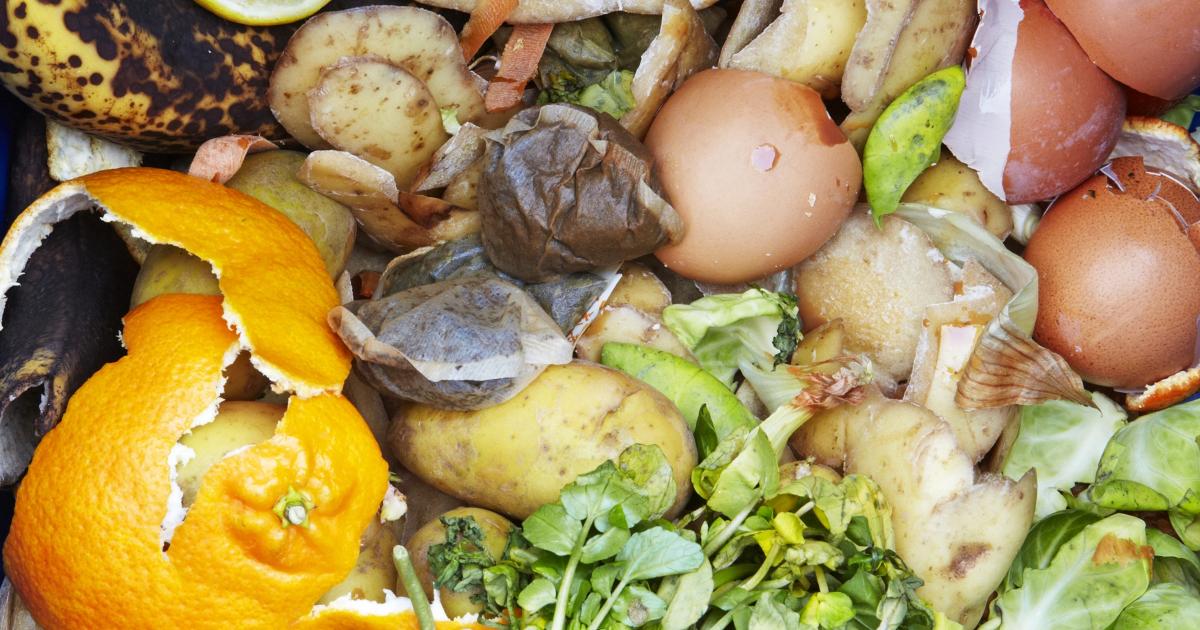Home>Gardening Tips and Tricks>Eco-Friendly Gardening>What Do I Put In Compost Bin
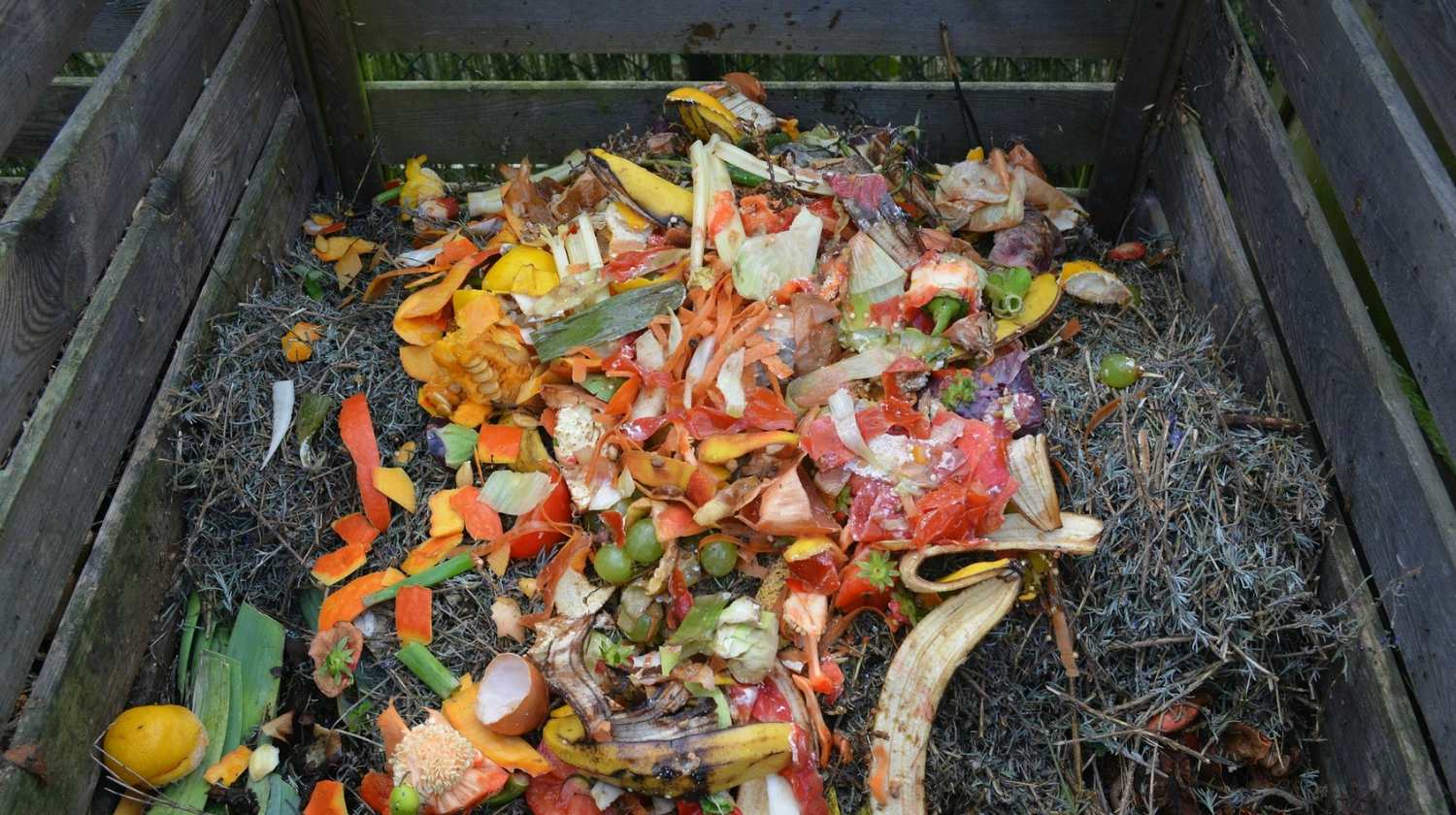

Eco-Friendly Gardening
What Do I Put In Compost Bin
Modified: January 22, 2024
Discover the secrets of an eco-friendly gardening with our guide. Learn what to put in your compost bin for healthy and thriving plants in your garden.
(Many of the links in this article redirect to a specific reviewed product. Your purchase of these products through affiliate links helps to generate commission for Chicagolandgardening.com, at no extra cost. Learn more)
Table of Contents
Introduction
Welcome to the world of eco-friendly gardening! One of the best practices you can adopt in your gardening journey is composting. Composting is the process of breaking down organic materials into nutrient-rich compost that can be used to nourish your plants, reduce waste, and promote a sustainable environment.
Composting not only benefits your garden but also plays a crucial role in reducing greenhouse gas emissions. According to the Environmental Protection Agency (EPA), food scraps and yard waste make up more than 30% of what we throw away. By composting, we can divert this waste from landfills, where it produces harmful methane gas, and instead, transform it into a valuable resource for our gardens.
In this article, we will explore the essentials of composting, including what materials can be put in a compost bin, how to maintain a compost bin, and troubleshoot common composting issues. By the end, you will have the knowledge and confidence needed to embark on your own composting journey.
Whether you have a large backyard or a small balcony, composting is accessible to everyone. Not only does it enrich the soil, but it also reduces the need for chemical fertilizers and pesticides, creating a healthier and more sustainable growing environment. So, let’s dive in and discover the wonders of composting!
Why Composting is Beneficial
Composting offers a wide range of benefits that make it an essential practice for any eco-friendly gardener. Let’s explore why composting is so beneficial:
- Reduces Waste: Composting allows you to divert organic waste such as kitchen scraps and yard trimmings from the landfill. This not only reduces the amount of waste going into landfills but also decreases greenhouse gas emissions.
- Nutrient-rich Soil Amendment: Compost is often referred to as “black gold” due to its richness in nutrients. When added to the soil, compost improves its structure, increases moisture retention, and enhances nutrient availability for plants. This results in healthier and more vibrant gardens.
- Enriches Soil Microorganisms: Composting fosters the growth of beneficial microorganisms that break down organic matter. These microorganisms enhance soil fertility, promote better root development, and improve overall plant health.
- Reduces the Need for Chemical Fertilizers: By using compost, you can reduce or eliminate the need for synthetic fertilizers. Compost provides a slow-release, natural source of nutrients that promotes long-term soil health without harmful chemicals.
- Enhances Water Conservation: Compost aids in the retention of moisture in the soil. By improving water-holding capacity, compost helps to reduce water usage in your garden, making it more resilient in times of drought.
- Suppresses Plant Diseases and Pests: Compost supports the growth of beneficial microorganisms and fungi that can help suppress plant diseases and pests. This reduces the reliance on chemical pesticides and promotes a more balanced ecosystem in your garden.
As you can see, composting benefits not only your garden but also the environment as a whole. It allows you to become an active participant in creating a more sustainable and eco-friendly future. Now that you understand the significance of composting, let’s explore the materials that can be added to a compost bin.
What Materials Can be Put in a Compost Bin
Composting is all about finding the right balance of organic materials that will break down and transform into nutrient-rich compost. To create a successful compost pile, you need to incorporate a mix of green and brown materials.
Green Materials:
Green materials are high in nitrogen and provide essential nutrients for the microorganisms that break down the organic matter. Here are some examples of green materials that can be added to a compost bin:
- Vegetable and fruit scraps
- Coffee grounds and tea leaves
- Grass clippings (in moderation to prevent matting)
- Plant trimmings and prunings
- Young weeds (without seeds)
- Seaweed and algae
- Manure from herbivorous animals (cow, horse, rabbit, etc.)
Brown Materials:
Brown materials are high in carbon and provide structure and aeration to the compost pile. They also help balance the nitrogen-rich green materials. Here are some examples of brown materials that can be added to a compost bin:
- Dry leaves
- Shredded newspaper and cardboard
- Dry grass clippings
- Straw and hay
- Corn stalks and husks
- Wood chips and sawdust (in moderation)
- Dead plants and flowers
It’s important to note that for efficient composting, you should aim for a ratio of roughly three parts brown material to one part green material. This balance ensures that the compost pile has enough carbon for decomposition and prevents the compost from becoming too wet or smelly.
Now that you have a good understanding of what materials can be added to a compost bin, let’s explore what should not be included in the composting process.
Green Materials for Composting
Green materials, also known as nitrogen-rich materials, are an essential component of a successful composting process. These materials provide the necessary nutrients for the microorganisms that break down organic matter, helping to create nutrient-rich compost. Here are some examples of green materials that can be added to your compost bin:
- Vegetable and Fruit Scraps: Leftover vegetable peels, fruit rinds, and cores are excellent additions to your compost bin. Be sure to chop them into smaller pieces to speed up the decomposition process.
- Coffee Grounds and Tea Leaves: Used coffee grounds and tea leaves are fantastic sources of nitrogen. They add valuable nutrients to the compost pile while also helping to balance the pH levels.
- Grass Clippings: If you practice organic lawn care and don’t use chemical fertilizers or pesticides, your grass clippings can be a valuable addition to your compost bin. However, use them sparingly to avoid clumping and odor issues.
- Plant Trimmings and Prunings: Any excess leaves, stems, or branches from your garden pruning sessions can be added to the compost bin. Just make sure to shred or chop them into smaller pieces for faster decomposition.
- Young Weeds: Weeds without seeds can be composted as green materials. However, it is important to avoid adding any mature weeds or those that have gone to seed, as this can lead to weed growth in your compost or garden.
- Seaweed and Algae: If you live near the coast or have access to seaweed or algae, they can be excellent additions to your compost bin. Rinse them thoroughly to remove excess salt before adding them to your compost pile.
- Manure from Herbivorous Animals: Manure from animals such as cows, horses, rabbits, or chickens can be valuable additions to your compost. However, it is important to ensure that the manure has been aged or composted separately before adding it to your garden.
Remember, when adding green materials to your compost bin, aim for a good balance by mixing them with brown materials. This ensures proper decomposition and helps avoid issues such as odors or excessive moisture in your compost pile. Now that you know about green materials, let’s explore the brown materials that are essential for composting.
Brown Materials for Composting
Brown materials, also known as carbon-rich materials, are essential components of a healthy compost pile. These materials provide structure, aeration, and the necessary carbon for the efficient decomposition of organic matter. Here are some examples of brown materials that can be added to your compost bin:
- Dry Leaves: Fallen leaves from trees make an excellent source of carbon for your compost pile. Shred them or break them into smaller pieces to speed up decomposition.
- Shredded Newspaper and Cardboard: Uncoated paper products, such as shredded newspaper or cardboard, can be added to your compost as a source of carbon. Avoid glossy or colored paper as they may contain harmful chemicals.
- Dry Grass Clippings: If you have dry, brown grass clippings, they can be used as brown materials in your compost. However, mix them in moderation to prevent matting and odor issues.
- Straw and Hay: Straw and hay are abundant sources of carbon and are widely used in composting. Break them into smaller pieces to speed up decomposition and ensure proper airflow.
- Corn Stalks and Husks: Leftover corn stalks and husks from your harvest can be added to your compost pile. Chop them into smaller pieces to facilitate decomposition.
- Wood Chips and Sawdust: Small amounts of wood chips or sawdust can be added as brown materials. It’s important to use them in moderation, as they can take longer to decompose and may tie up nitrogen if added in excessive quantities.
- Dead Plants and Flowers: Any dead plants or flowers from your garden can be added to your compost. Make sure to chop them into smaller pieces to aid in decomposition.
Remember, achieving a good balance between green and brown materials is key to successful composting. Aim for a ratio of roughly three parts brown materials to one part green materials to ensure proper decomposition and avoid any unpleasant odors or excessive moisture. Now that you know about both green and brown materials, let’s explore what should not be included in a compost bin.
What Should Not be Put in a Compost Bin
While composting is a versatile and eco-friendly practice, there are certain materials that should be avoided in a compost bin. These materials can disrupt the composting process, attract unwanted pests, or introduce harmful elements into your compost. Here are some items that should not be put in a compost bin:
- Meat and Dairy Products: Avoid adding meat, fish, poultry, or dairy products to your compost bin. These items can attract rodents, insects, and other pests, and may create unpleasant odors.
- Grease, Oil, and Fat: Fatty substances like grease, oil, and fat do not break down easily in a compost bin and can create odors. It is best to avoid adding these materials to maintain a healthy composting environment.
- Processed Foods: Processed foods, such as bread, pasta, and rice, may contain additives or preservatives that can disrupt the composting process. Additionally, these items can attract pests and unwanted critters.
- Diseased Plants: Avoid adding plants that are diseased or infected with pests to your compost pile. The high temperatures in a compost bin may not be sufficient to eliminate the pathogens, and you risk spreading disease in your garden.
- Weeds with Mature Seeds: Weeds that have already produced seeds should not be added to your compost bin. The high temperatures in the composting process may not be effective in killing the seeds, resulting in weed growth when you use the compost in your garden.
- Charcoal Ash or Charcoal Briquettes: Charcoal ash and charcoal briquettes should not be included in compost. They can contain chemicals that are harmful to plants and can alter the pH balance of the compost.
- Pet Waste: Pet waste, such as cat litter or dog feces, should never be added to a compost bin. These materials can contain harmful pathogens and bacteria that could contaminate the compost.
By avoiding these materials, you can maintain a healthy and productive composting system. Remember, the goal is to create nutrient-rich compost that benefits your garden and the environment. Now let’s move on to maintaining your compost bin for optimum composting success.
Maintaining a Compost Bin
Maintaining your compost bin is crucial for successful decomposition and the development of nutrient-rich compost. Here are some tips to help you effectively maintain your compost bin:
- Aerate the Compost: Regularly turning or mixing the compost helps to introduce oxygen and facilitates the decomposition process. Use a garden fork or compost turner to aerate the pile, ensuring that all materials receive equal exposure to air.
- Monitor Moisture Levels: Your compost pile should be moist, but not waterlogged. Ideally, it should have the consistency of a damp sponge. If the compost feels too dry, add water to moisten it. On the other hand, if it’s too wet, add dry brown materials to absorb the excess moisture.
- Manage Size and Balance: Monitor the size of your compost pile and ensure a proper balance between green and brown materials. If the pile becomes too large, it may not decompose efficiently. Adjust the size by adding or reducing materials and always maintain a 3:1 ratio of brown to green materials.
- Avoid Compaction: Compact compost can hinder air circulation and slow down the decomposition process. Avoid heavy compaction by layering materials loosely and periodically turning the pile.
- Patience and Time: Composting is a natural process that takes time. Depending on the conditions, it can take several months to a year for the compost to fully mature. Be patient and allow nature to work its magic.
- Protect the Compost: Place a cover or lid on your compost bin to protect it from excessive rain or drying out in hot weather. This helps maintain the ideal moisture levels and prevents unwanted pests from accessing the compost.
Regularly tending to your compost bin and following these maintenance practices will accelerate the decomposition process and result in high-quality compost for your garden. Remember, composting is a dynamic process, and adjustments may be needed depending on the environmental conditions and the materials you add.
Now that you know how to maintain your compost bin, let’s address common composting problems and how to troubleshoot them.
Troubleshooting Common Composting Issues
Composting is a natural process, and occasionally, you may encounter challenges along the way. Here are some common composting issues and tips to troubleshoot them:
- Slow or Lack of Decomposition: If your compost is not breaking down as quickly as expected, it may be due to improper balance or insufficient aeration. Make sure you have a good mix of green and brown materials in the right ratio. Additionally, turn the compost more frequently to introduce oxygen and accelerate decomposition.
- Unpleasant Odors: Foul smells indicate that the compost has become too wet or contains too much nitrogen-rich material. To remedy this, add more brown materials to absorb excess moisture and adjust the carbon-to-nitrogen ratio. Mixing the pile more frequently will also help air out the compost and reduce odors.
- Pest Infestation: If your compost bin is attracting pests like flies, rats, or raccoons, it may be due to inappropriate materials being added. Avoid adding meat, dairy, oily food scraps, or pet waste, as these can attract unwanted critters. To deter pests, cover the compost bin with a tightly fitted lid or use wire mesh to prevent access.
- Excessive Moisture: Heavy rainfall or over-watering can make the compost too wet and lead to a lack of aeration. Add dry brown materials like leaves, straw, or shredded newspaper to absorb moisture and improve airflow. You can also cover the bin during rainy periods to prevent excessive water infiltration.
- Presence of Weed Seeds: If you notice that weed seeds are germinating in your compost, it may be due to adding mature weeds or seeds. To prevent this, avoid adding weeds that have gone to seed. If you suspect your compost contains weed seeds, hot composting (maintaining a higher temperature in the pile) can help kill them.
- Acidic or Alkaline Compost: A compost pile that is too acidic or alkaline can affect the growth of plants. To correct the pH, add agricultural lime to increase alkalinity or sulfur to increase acidity. Gradually adjust the pH over time to avoid sudden shifts.
Remember that composting is a learning process, and it may take some trial and error to troubleshoot specific issues. Monitoring your compost bin regularly, making necessary adjustments, and being patient will help you overcome most challenges.
By incorporating these troubleshooting techniques, you will be able to overcome common composting issues and produce high-quality compost that will nourish your plants and promote a healthy garden ecosystem.
Now that you are equipped with troubleshooting knowledge, let’s wrap up this article by emphasizing the importance of composting in an eco-friendly gardening practice.
Conclusion
Composting is a vital practice for eco-friendly gardeners that offers numerous benefits for both your garden and the environment. By diverting organic waste from landfills and transforming it into nutrient-rich compost, you can nourish your plants, reduce waste, and promote sustainability.
Throughout this article, we’ve explored the essentials of composting, including the materials that can be put in a compost bin, the importance of maintaining a balance between green and brown materials, and how to troubleshoot common composting issues. By following these guidelines, you can create a thriving compost pile that turns waste into valuable resources.
Composting not only enriches the soil and enhances plant growth but also contributes to water conservation, reduces the need for chemical fertilizers and pesticides, and promotes a balanced garden ecosystem. It’s a sustainable way to reduce waste, combat climate change, and create a healthier environment for yourself and future generations.
Whether you have a small balcony or a spacious backyard, anyone can practice composting. It’s a journey that teaches us patience, observation, and an appreciation for the natural cycles of life. So, dig in, get your hands dirty, and join the growing community of eco-conscious gardeners who are making a positive impact on the planet.
Remember, composting is a continuous process. As you gain experience, you will discover what works best for your specific circumstances. Adapt your composting practices accordingly and enjoy the rewards of a thriving garden that is nourished by your own efforts.
So, go ahead and start composting today – it’s a small step that can make a big difference in creating a greener and more sustainable future for our planet.

